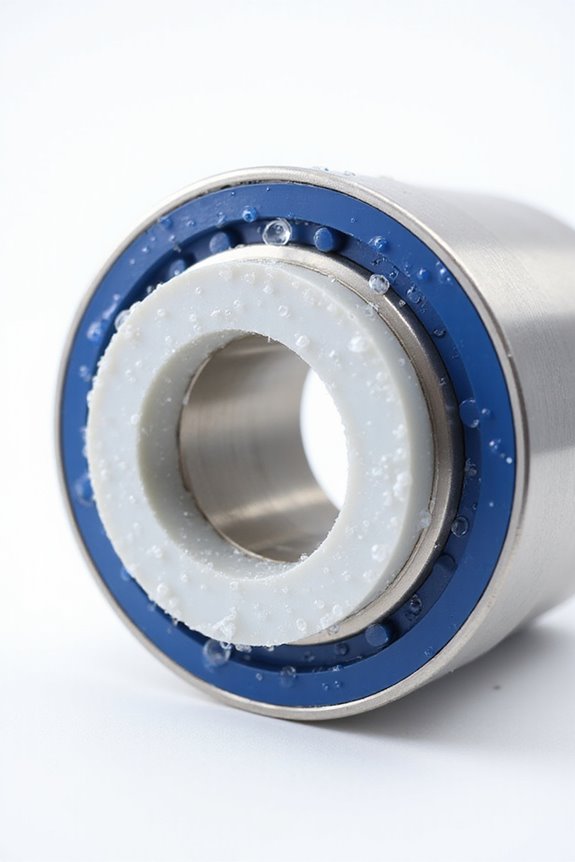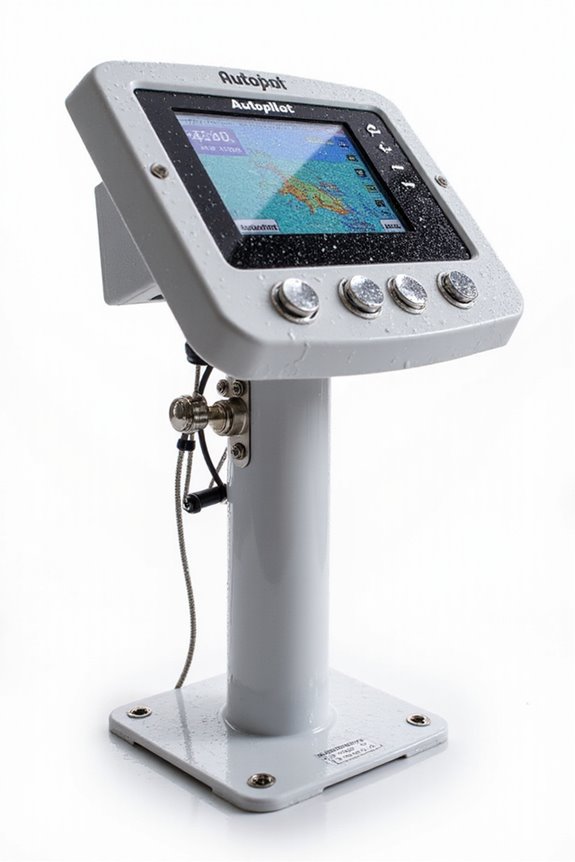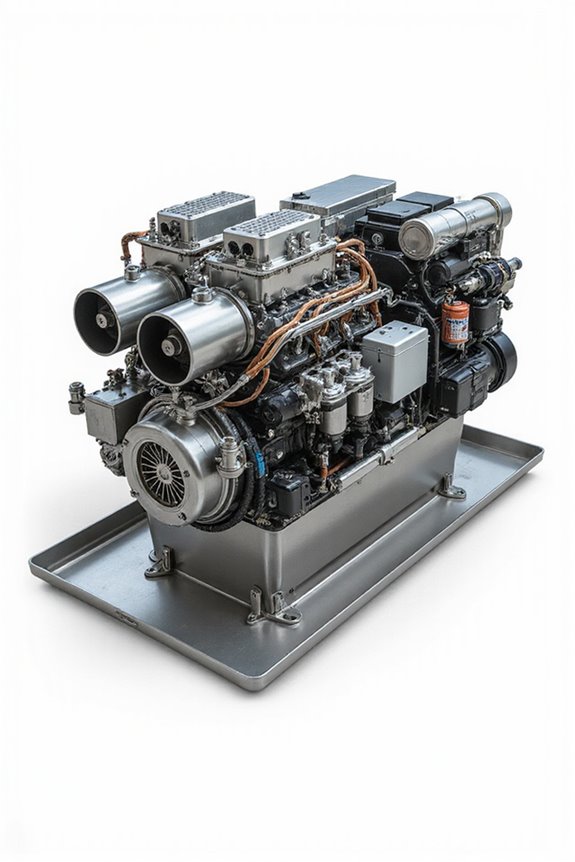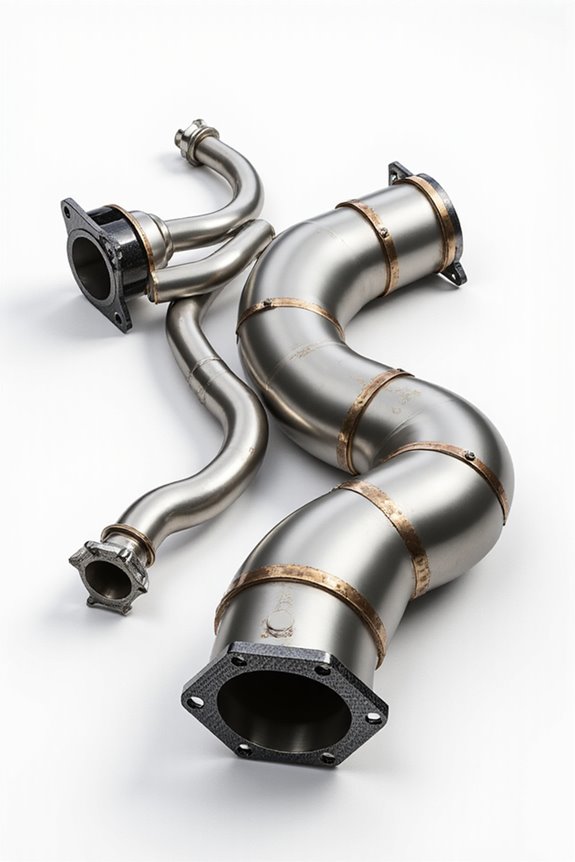When we talk about boosting bushings’ wear resistance in salty marine conditions, choosing the right material is key. Bronze, especially manganese or aluminum bronze, stands strong against corrosion and impact. Composites like DuraBlue keep friction low without messy greases, while tough thermoplastics hold up under strain. Coatings and smart design add extra defense layers, too. Ever wonder how to balance toughness with smooth operation? Stick around — there’s more to mastering marine bushings’ durability than you might think.
Key Takeaways
- Use materials like bronze or composites such as DuraBlue for natural wear resistance and self-lubrication in marine environments.
- Apply surface treatments and coatings, including powder coating or marine-grade paints, to protect against corrosion and wear.
- Incorporate thermoplastics like Ertalyte TX PET-P for enhanced mechanical strength and abrasion resistance in bushings.
- Maintain effective lubrication practices to create protective films reducing friction and wear under harsh saltwater conditions.
- Design bushings with appropriate load distribution and geometry to minimize stress concentrations and prolong wear life.
Selecting Durable Materials for Marine Bushings
When it comes to selecting durable materials for marine bushings, we’ve got to think beyond just strength—because in the harsh saltwater environment, wear resistance is the real MVP. It’s all about the right material properties that can stand up to constant abrasion, swelling, and chemical exposure. Bronze, for example, packs a punch with its self-lubricating durability, while composites like DuraBlue give us the bonus of low friction without messy greases. Thermoplastics, such as Ertalyte TX PET-P, also shine by offering both wear resistance and mechanical strength. So, when we pick materials for marine applications, we’re really building a team that can handle rough waters, temperature swings, and sediment abrasion—making sure our bushings last longer and perform better. Who doesn’t want that kind of reliability?
Strategies to Improve Corrosion Resistance
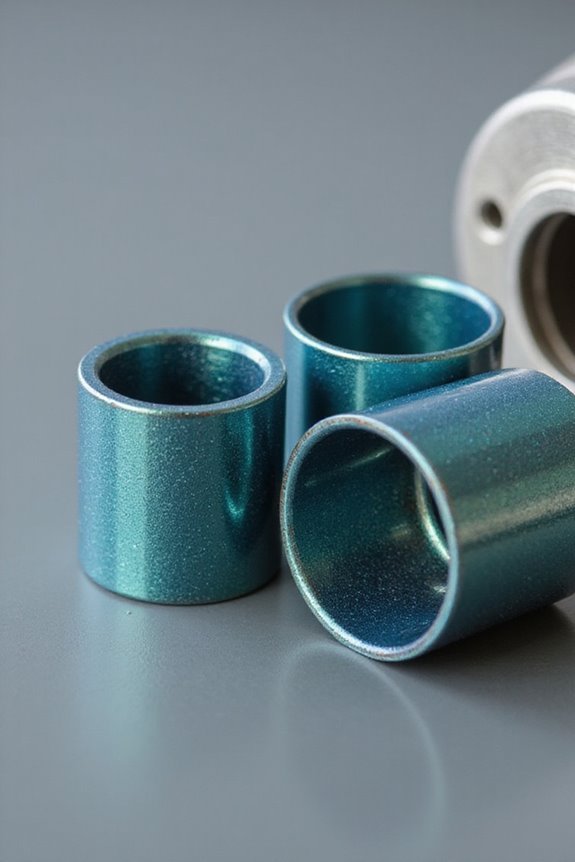
Although corrosion might seem like a relentless opponent in marine environments, we’ve got several smart strategies to keep it in check and extend the life of our bushings. First off, coating methods like powder coating and marine-grade paints create strong protective barriers that shield bushings from salty, harsh conditions. Ever thought about how a slick layer of grease or oil doubles as a moisture repellent? It’s a simple but effective trick to reduce corrosion risk on moving parts. We also can’t forget cathodic protection—using sacrificial anodes or impressed currents that literally take the hit for our bushings. By combining these approaches with good surface prep and thoughtful design, we create a well-rounded defense. After all, isn’t teamwork the best way to tackle such a persistent foe?
Enhancing Load-Bearing Capabilities
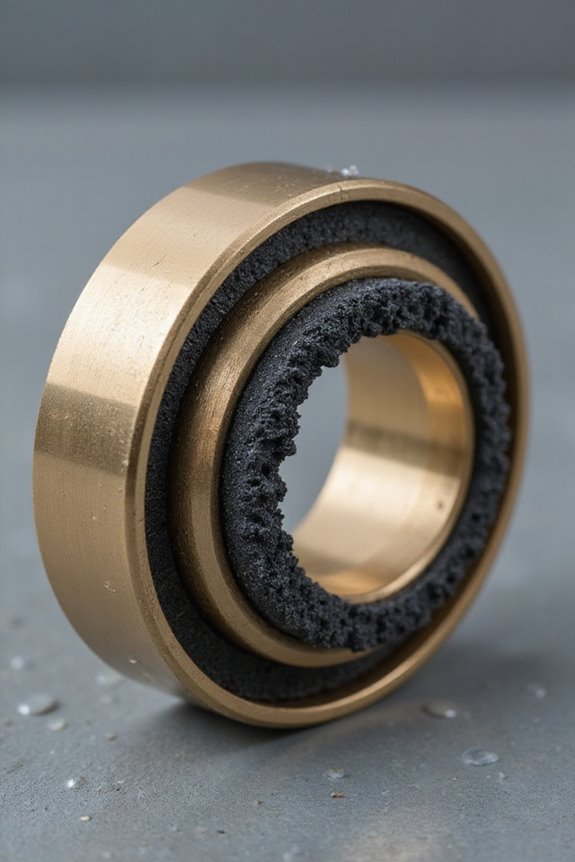
After putting corrosion resistance measures in place, we’ve got to make sure our bushings can handle the loads they’ll face out there. This means focusing on smart load distribution. Ever thought about how larger diameter bronze bushings spread the stress, kind of like sharing the workload among friends? Using materials like manganese bronze adds a boost of impact resistance, so sudden shocks—common in marine environments—won’t catch us off guard. Plus, alloys like aluminum bronze offer a sweet spot with high strength and durability without getting too heavy. We also lean on custom manufacturing to tailor bushings for specific load needs, ensuring dimensional stability and reducing deformation risk. Together, these steps strengthen our bushings’ ability to bear loads reliably, letting us sail through rough waters—literally and figuratively!
Techniques for Reducing Friction in Bushings
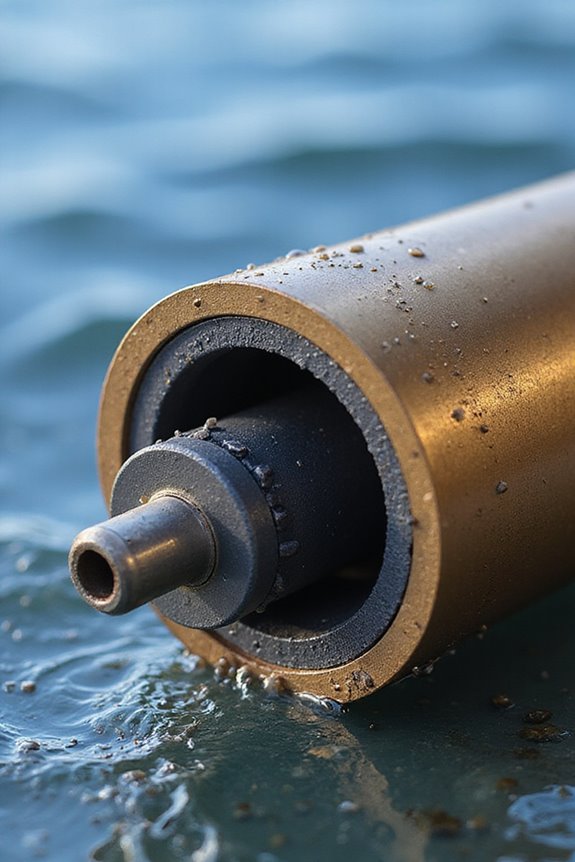
Since friction loves to sneak in and wear down our bushings faster than we’d like, we’ve got to be clever about reducing it. One key way is through effective lubrication techniques—applying the right lubricant forms a thin protective film that cuts down friction and wear. But lubrication isn’t a “set it and forget it” deal; regular maintenance to keep contaminants out is essential, right? Beyond oils and greases, surface treatments like Teflon or copper coatings help improve friction reduction by boosting thermal and corrosion resistance. Ever thought about material choice? Graphite-filled plastics or self-lubricating composites decrease friction naturally, especially under heavy loads. Plus, fine-tuning clearance optimizes how lubricants flow, reducing metal-on-metal contact. Together, these techniques create a team effort making our bushings last longer and perform smoother in tough marine conditions.
Addressing Wear and Galling in Marine Environments
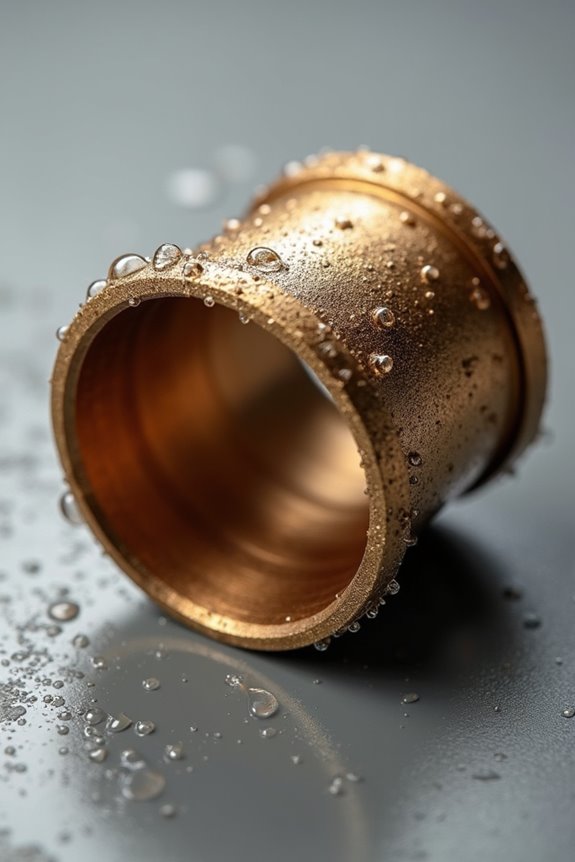
We’ve talked a lot about cutting down friction to keep bushings running smooth, but in marine environments, wear and galling play starring roles too—and they’re a bit trickier to handle. Tackling frictional wear means choosing materials like phosphor bronze or self-lubricating plastics, which resist abrasion and corrosion. Ever wonder how galling prevention actually works? It’s all about minimizing that pesky adhesion between sliding surfaces—bronze’s unique composition and advanced composites like DuraBlue do this naturally. Plus, surface treatments and smart material choices help bushings hold up under salty seas without needing grease. So, by blending these approaches, we can keep marine bushings tougher and longer-lasting, even when the conditions get rough. Who knew protecting a bushing could be such a balancing act?
Performance Considerations in Harsh Marine Conditions
Although marine environments can be tough on just about anything, bushings—especially those made from bronze—tend to hold up surprisingly well. Ever wonder why? Bronze resists material fatigue caused by constant stress and saltwater exposure, which wears down lesser materials faster. Plus, it handles shock loads and vibrations without losing its shape or strength—a bit like the steadfast friend you count on during rough seas. We also can’t overlook environmental impact; bronze’s chemical stability means it won’t leach harmful substances into our oceans, unlike some synthetic alternatives. While advanced polymers have their place, bronze remains our go-to for durability and reliability in harsh marine conditions. So, when performance under pressure counts, bronze bushings keep things running smoothly, with less worry and more confidence on board.
Maintenance Practices to Extend Bushing Lifespan
When it comes to keeping our bushings in tip-top shape, regular maintenance isn’t just a good idea—it’s downright essential. Sticking to solid maintenance schedules tailored to marine conditions keeps wear at bay and boosts lifespan. We can’t overlook inspection techniques either; daily visual checks spot early signs of trouble before they turn costly. And yes, lubrication is the unsung hero here—applying the right grease at set intervals avoids overheating and deterioration. Ever thought about how proper cleaning and seal upkeep fit into the picture? They help fend off corrosion and debris buildup, keeping things running smoothly. Plus, keeping neat maintenance records lets us track performance trends. So, stick with these habits, and your bushings will thank you by lasting longer and working better. Who knew care could be that simple?
Frequently Asked Questions
How Do Marine Bushing Costs Compare Across Different Materials?
Charting the sea of material cost comparison, we see bronze as our reliable vessel—more budget-friendly yet durable. Stainless steel shines like a lighthouse in marine application analysis, offering top corrosion resistance but at a higher price. Together, we weigh them carefully.
What Are the Environmental Impacts of Disposing Worn Bushings?
When disposing worn bushings, we face pollution risks harming marine life. Together, we can embrace recycling methods and pollution prevention strategies to protect ecosystems. Let’s commit to responsible choices that foster environmental stewardship and community wellbeing.
Can Bushings Be Custom-Manufactured for Unique Marine Equipment?
Over 70% of marine equipment demands custom designs to meet unique marine specifications. We collaborate closely so you’re part of the process, ensuring bushings perfectly fit your vessel’s needs—because your marine gear deserves nothing less.
How Does Bushing Installation Affect Overall Marine Machinery Performance?
It is understood that bushing alignment and proper installation techniques are essential for marine machinery performance. Together, we’ll guarantee precise fitment, reduce wear, prevent misalignment, and keep operations smooth, so we all sail with reliability and confidence.
Are There Emerging Technologies Improving Marine Bushing Lifespan?
We’re seeing breakthroughs like 3D printing for custom bushings, nanotechnology coatings boosting durability, self-lubricating materials reducing maintenance, and smart sensors monitoring wear in real time—all helping us extend marine bushing lifespan together.

